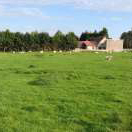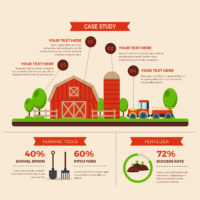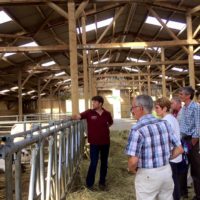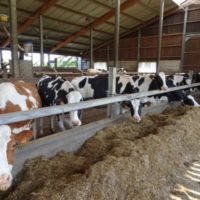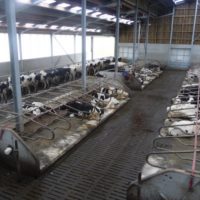Cost reduction thanks to rotational grazing
Description
The farmer has recently set up rotational grazing (2017) in sheep production. The ewes are grazing all year long, they only go inside for a few days for lambing.
The farmer has two islets that are used the same way:
- 1st islet: 13 ha divided in 13 plots for 130 ewes with twin lambs (1 day/plot)
- 2nd islet: 11 ha divided in 7 plots for 190 ewes with single and twin lambs (3 days/plot)
Rotational grazing reduces the parasitic pressure on the farm and therefore the use of dewormers.
This grazing management system makes it possible to have homogenous lambs with a satisfying weaning weight.
The farmer does a regular checks on her animals in order to insure better tracking and anticipation.
Reason for the innovation
The implementation of this innovation is part of a goal of reducing costs.
The farmer is curious on the subject and on the technical proficiency it implies. She has the project to move forward the lambing period for optimum utilization of grass by the growing lambs.
Farm description
Environment
- Soil: Sandy
- Climate: Temperate oceanic climate
- Altitude: 100m
Grassland management
- Grazing management type: rotational
- Length: 11.5 months/year
- 100% of the grasslands are grazed (including 73% of grazed and mowed grasslands)
- No fertilization
- Dominant grass and legume species in grasslands:
- White Clover, Red Clover, Birdsfoot, Medicago Lupulina
- Perennial Rye-grass, Bromus, Fes-cue, Cocksfoot, Meadow grass and Meadow soft grass
- Forage conservation type: Hay
Structure
- Annual Work Unit: 1,5
- Agricultural Area : 56 ha UAA
- Production system based on grass (56 ha of permanent grasslands)
- Farm type: Specialist small ruminants
- Breed: Texel
- Number of ewes: 320 (60 LU)
- 1st batch: lambing in February—females kept for renewal (100/year)
- 2nd batch: lambing in April-May—lambs for slaughter
Animal performance
- Average prolificity: 1.8 lamb/ewe
- Weight of sold lambs: 45 kg live weight (19 to 22 kg of carcass)
Why it is working
The success comes from the will to better use and value the grass.
The presence of the two big islets on the farm is a real advantage.
The farmer considers herself on one hand as sheep producer and on the other hand as grass producer.
Additional information
| Farming system | conventional farming |
|---|---|
| Domains of innovation | grazing management system, landscape |
| Main types of animal | meat sheep |
| Country | France |
| Product type | Farmer portrait |
| Language | English, French |
